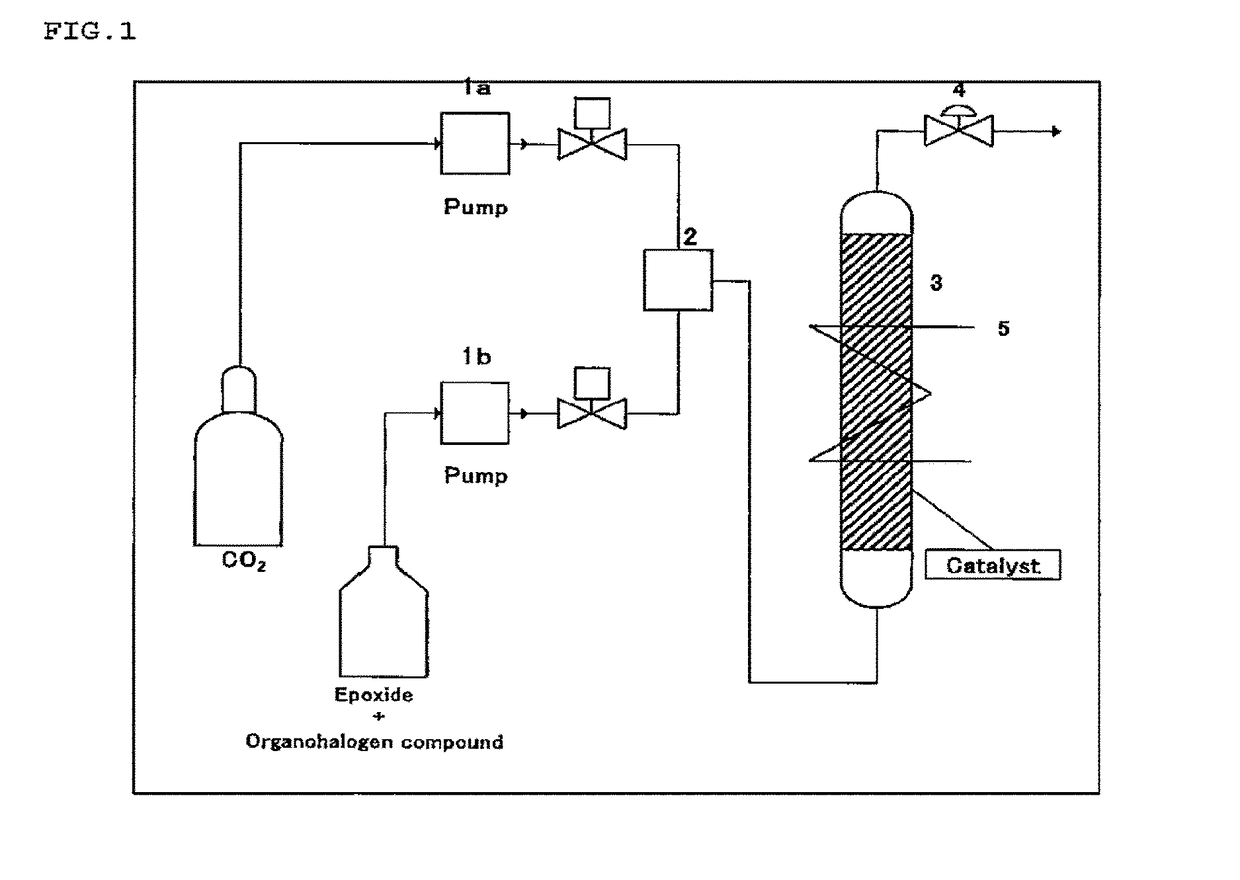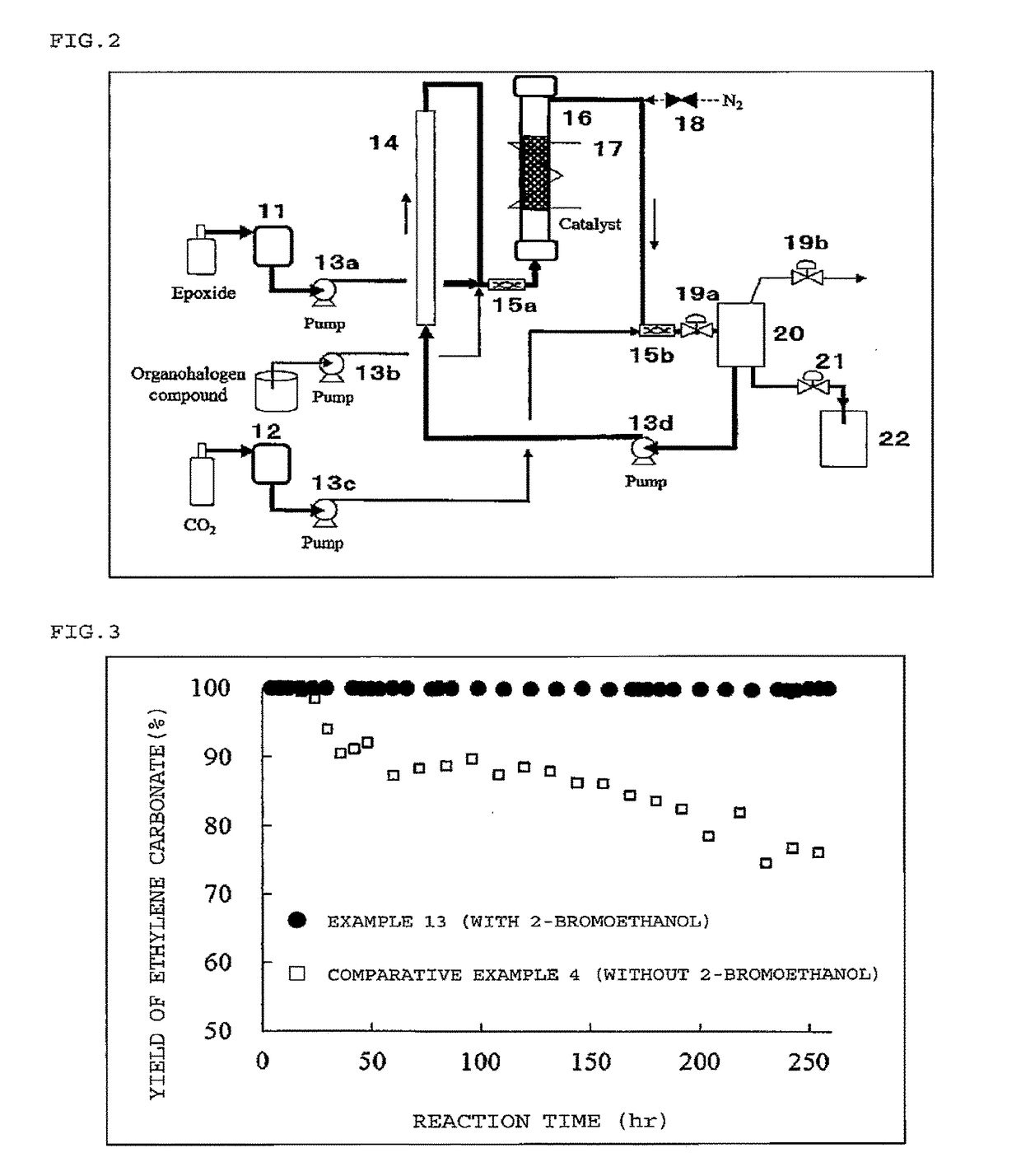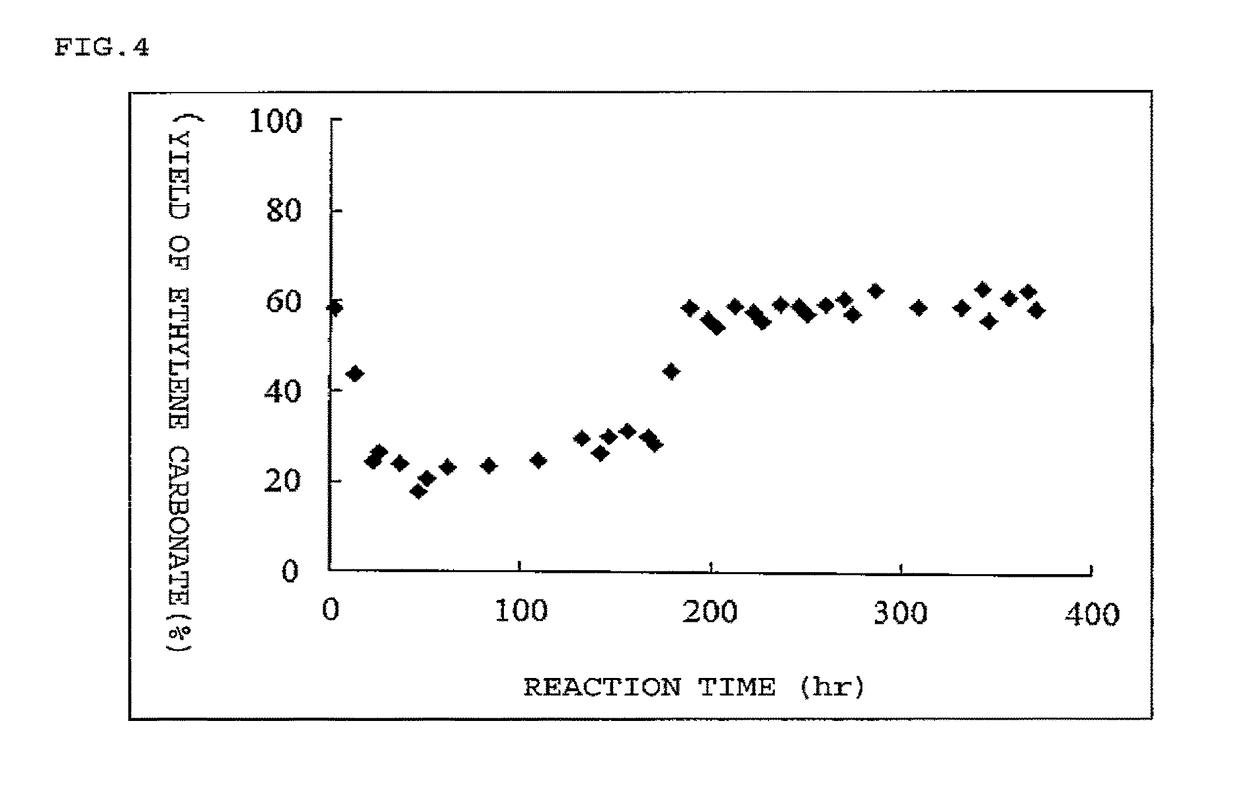Method for producing cyclic carbonate
a technology of cyclic carbonate and carbonate, which is applied in the direction of organic compound/hydride/coordination complex catalyst, physical/chemical process catalyst, organic chemistry, etc., can solve the problems of reducing yield, complex production steps, and decomposition of catalysts, and achieves high conversion rate, high yield, and effective production
- Summary
- Abstract
- Description
- Claims
- Application Information
AI Technical Summary
Benefits of technology
Problems solved by technology
Method used
Image
Examples
synthesis example 1
Catalyst Synthesis Example 1
Synthesis of Tributyl Phosphonium Bromide Surface Modified Silica Gel Catalyst (Catalyst A)
[0118]20 g of beaded silica gel (CARiACT Q-10 manufactured by FUJI SILYSIA CHEMICAL LTD. (average pore diameter of 10 nm, particle diameter of 1.2 to 2.4 mm, specific surface area of 300 m2 / g)) and 50 mL of 2N hydrochloric acid were charged in a 200 mL-three-neck flask equipped with a stirring blade, the inside of the flask was replaced with nitrogen and refluxed by heating for 4 hours to thus conduct a demetallation treatment on the silica gel. Then, the silica gel was separated by filtration and sufficiently washed with ion exchange water. In addition, an aqueous 1 N-silver nitrate solution was dropped into the solution after washing to confirm that chlorine was not contained and sufficient washing was carried out on the basis that the solution did not become clouded.
[0119]The above described silica gel that underwent an acid treatment and 50 mL of toluene were ch...
synthesis example 2
Catalyst Synthesis Example 2
Synthesis of Tributyl Phosphonium Bromide Surface Modified Silica Gel Catalyst (Catalyst B)
[0123]2000 g of beaded silica gel (CARiACT Q-10 manufactured by FUJI SILYSIA CHEMICAL LTD. (average pore diameter of 10 nm, particle diameter of 1.2 to 2.4 mm, specific surface area of 300 m2 / g)) and 5000 mL of xylene were charged in a 10 L-three-neck flask equipped with a stirring blade, which has a Dean-Stark trap, and azeotropic dehydration of toluene-water was carried out for 2 hours under reflux at 140° C. to remove moisture in the silica gel. Then, the Dean-Stark trap was detached, the inside of the flask was replaced with nitrogen, and 219 g (0.846 mol) of 3-bromopropylmethoxysilane was then dropped thereto. The reaction solution was directly refluxed by heating at 135° C. for 7 hours to thus conduct a silanization reaction. The obtained reaction product was then separated by filtration and washed with xylene twice to thus obtain 3810 g of a catalyst precurso...
synthesis example 3
Catalyst Synthesis Example 3
Synthesis of Tributyl Phosphonium Chloride Surface Modified Silica Gel Catalyst (Catalyst C)
[0124]Catalyst C (tributyl phosphonium chloride surface modified silica gel, SiO2—C3H6PBu3Cl) was synthesized by the same operation as Catalyst Synthesis Example 1 except for replacing 3-bromopropyltrimethoxysilane with 3-chloropropyltrimethoxysilane. The chlorine modification amount in the catalyst was 0.42 mmol / g, and the phosphorus modification amount was 0.33 mmol / g.
PUM
| Property | Measurement | Unit |
|---|---|---|
| reaction temperature | aaaaa | aaaaa |
| reaction temperature | aaaaa | aaaaa |
| voltage | aaaaa | aaaaa |
Abstract
Description
Claims
Application Information
 Login to View More
Login to View More - R&D
- Intellectual Property
- Life Sciences
- Materials
- Tech Scout
- Unparalleled Data Quality
- Higher Quality Content
- 60% Fewer Hallucinations
Browse by: Latest US Patents, China's latest patents, Technical Efficacy Thesaurus, Application Domain, Technology Topic, Popular Technical Reports.
© 2025 PatSnap. All rights reserved.Legal|Privacy policy|Modern Slavery Act Transparency Statement|Sitemap|About US| Contact US: help@patsnap.com



